
Namco Limited was a Japanese multinational video game and entertainment company, headquartered in Ōta, Tokyo. It held several international branches, including Namco America in Santa Clara, California, Namco Europe in London, Namco Taiwan in Kaohsiung, and Shanghai Namco in mainland China.

Dig Dug is a maze arcade video game released by Namco in 1982. It was distributed in North America by Atari, Inc. The player digs underground tunnels to attack enemies in each level, by either inflating them to bursting or crushing them underneath rocks.
In video game parlance, a multicart is a cartridge that contains more than one game. Typically, the separate games are available individually for purchase or were previously available individually. For this reason, collections, anthologies, and compilations are considered multicarts. The desirability of the multicart to consumers is that it provides better value, greater convenience, and more portability than the separate games would provide. The advantage to developers is that it allows two or more smaller games to be sold together for the price of one larger game, and provides an opportunity to repackage and sell older games one more time, often with little or no changes.

Xevious is a vertically scrolling shooter arcade video game developed and published by Namco in 1982. It was released in Japan by Namco and in North America by Atari, Inc. Controlling the Solvalou starship, the player attacks Xevious forces before they destroy all of mankind. The Solvalou has two weapons at its disposal: a zapper to destroy flying craft, and a blaster to bomb ground installations and enemies. It runs on the Namco Galaga arcade system.

The Tower of Druaga is a 1984 arcade action role-playing maze game developed and published in Japan by Namco. Controlling the golden-armored knight Gilgamesh, the player is tasked with scaling 60 floors of the titular tower in an effort to rescue the maiden Ki from Druaga, a demon with eight arms and four legs, who plans to use an artifact known as the Blue Crystal Rod to enslave all of mankind. It ran on the Namco Super Pac-Man arcade hardware, modified with a horizontal-scrolling video system used in Mappy.
Namco Museum is a series of video game compilations developed and published by Bandai Namco Entertainment for home video game consoles. The first title in the series, Namco Museum Vol. 1, was released for the PlayStation in 1995. Entries in the series have been released for multiple platforms, including the Game Boy Advance, PlayStation 2, PlayStation Portable, Nintendo DS and Xbox 360. the latest being Namco Museum Archives Vol. 2, released in 2020.
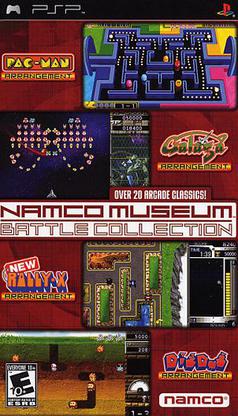
Namco Museum Battle Collection is a 2005 video game compilation developed by Tose and published by Namco for the PlayStation Portable; the first Namco Museum since the PS1 series to be developed in Japan. It includes 21 games - four of these are brand-new "arrangement" remakes of older Namco games, while the rest are emulated ports of Namco arcade games from the 1970s and 1980s. These ports include an options menu that allows the player to modify the in-game settings, such as the screen orientation and number of lives. Players can send one-level demos to a friend's console via the "Game Sharing" option in the main menu.

Grobda is a 1984 multidirectional shooter arcade video game developed and published by Namco. It is a spin-off from Xevious, as the player's tank first appeared in that game as an enemy. It runs on Namco Super Pac-Man hardware but with a video system like that used in Mappy and The Tower of Druaga, and it also uses a DAC for the "Get Ready" speech sample at the start of each round.
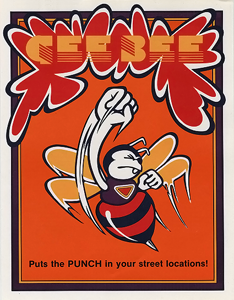
Gee Bee is a block breaker/video pinball hybrid arcade game developed and published by Namco in 1978. The player controls a set of paddles with a rotary knob, with the objective being to score as many points as possible by deflecting a ball against bricks, pop bumpers and other objects in the playfield. It was developed by Toru Iwatani, known as the creator of Pac-Man and Pole Position. Outside Japan, it was published by Gremlin Industries.

Namco Museum Remix is a 2007 video game compilation developed and published for the Wii by Namco Bandai Games. The compilation includes nine Namco arcade games and five "remix" games made specifically for this compilation. A remake, Namco Museum Megamix, was released exclusively in North America on November 26, 2010; the game features nine other arcade games alongside the titles from the original, as well as an additional remix game based on Grobda.
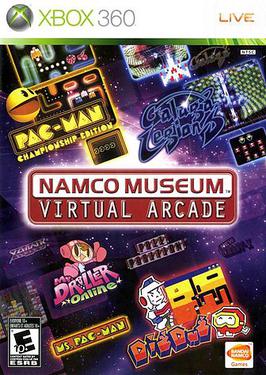
Namco Museum Virtual Arcade is a video game compilation developed and published by Namco Bandai Games for the Xbox 360. It was released in North America in 2008 and in Europe and Japan in 2009. Part of its Namco Museum series, Virtual Arcade includes 34 titles; nine of these are Namco Bandai-published Xbox Live Arcade games, and the rest are arcade games that are only accessible through the disc. Players can access the Xbox Live Arcade games through their dashboard if the disc is in the console.
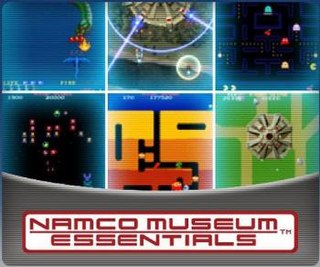
Namco Museum Essentials is a 2009 video game compilation developed by Cattle Call and published by Namco Bandai Games for the PlayStation 3. The collection includes five Namco arcade games from the 1980s: Pac-Man (1980), Galaga (1981), Dig Dug (1982), Xevious (1983), and Dragon Spirit (1987), alongside an exclusive Xevious sequel, Xevious Resurrection. Player progress is rewarded with stamps, which could be redeemed for virtual items in the now-defunct PlayStation Home service. Stamps also award points when collected, used to unlock extra features such as wallpapers.

Bandai Namco Studios Inc. is a Japanese video game developer headquartered in Kōtō, Tokyo. Its offices in Malaysia and Singapore, Bandai Namco Studio Malaysia and Bandai Namco Studios Singapore, are based out of Selangor, Malaysia and Infinite Studios, Singapore respectively. Bandai Namco Studios is a subsidiary of Bandai Namco Entertainment, which itself is a subsidiary of Bandai Namco Holdings. The company works under its parent company as a keiretsu; Bandai Namco Studios creates video games for home consoles, handheld systems, mobile devices and arcade hardware, while Bandai Namco Entertainment handles the managing, marketing and publishing of these products.
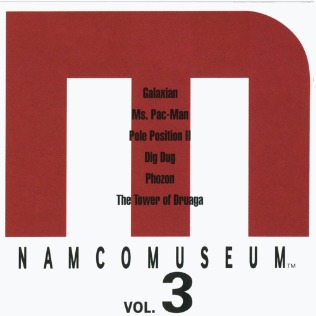
Namco Museum Vol. 3 is a video game compilation developed by Now Production for PlayStation in 1996-1997. It is the third game in the Namco Museum series.

Namco Museum Vol. 1 is a 1995 arcade video game compilation developed and published by Namco for the PlayStation. The collection includes seven arcade games developed by the company that were originally released in the 1980s, such as Pac-Man, Galaga and Pole Position. The compilation features a 3D open-world virtual museum that the player can interact with, the games being housed in themed rooms with exhibits, such as promotional flyers, cabinet artwork and instruction cards. Players can also view Namco product catalogs, promotional pamphlets and front cover scans of the company's Japanese press literature.

Namcot Collection, also known as Namco Museum Archives, is a 2020 video game compilation published by Bandai Namco Entertainment. Originally released in Japan for the Nintendo Switch, it was localized for international territories as two separate collections, Namco Museum Archives Vol. 1 and Vol. 2, for the Switch, Xbox One, PlayStation 4, and Windows. Namcot Collection includes a wide array of video games published by Namco for the Family Computer and Nintendo Entertainment System, with save states, achievements, and homebrew ports of Pac-Man Championship Edition and Gaplus.

Pac-Man 99 was a maze video game with battle royale elements developed by Arika and published by Bandai Namco Entertainment for the Nintendo Switch. It was released through the Nintendo Switch Online service on April 7, 2021.

Namco Museum is a 2001 video game compilation developed by Mass Media and published by Namco for the Game Boy Advance. It contains ports of five of their classic arcade games, Ms. Pac-Man, Pole Position, Dig Dug, Galaga, and Galaxian.
















